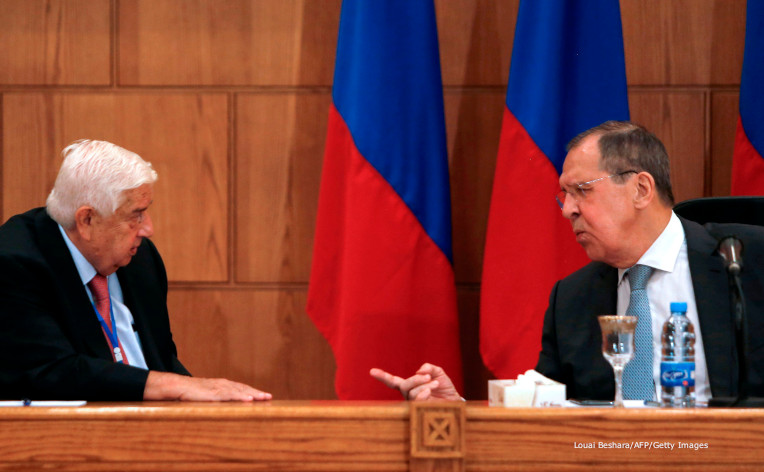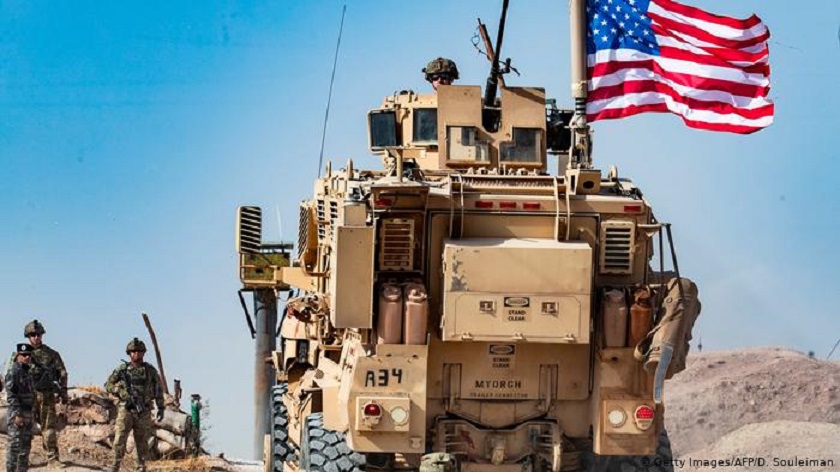How will Syria's unending war play out in the northeast?

At the beginning of September, Russian Foreign Minister Sergey Lavrov visited Syria for the first time since 2012. Lavrov’s visit followed the agreement reached at the end of August between the Syrian Democratic Council (SDC) – the political wing of the Syrian Democratic Forces (SDF) composed primarily of Kurdish, Arab and Assyrian militias – and the Syrian People’s Will Party, which is widely perceived as a pro-Russian faction within the Syrian opposition.
The two parties reportedly agreed to commit to finding a just democratic solution to the Kurdish issue in Syria, and ensure constitutional recognition of their rights, as well as the national rights of Assyrians, Syriacs, and all Syrian communities.
Meanwhile, the U.S. administration has been working on reconciliation between political factions of Syrian Kurds for the past year by mediating between the Kurdish national unity parties, the largest of which is the PYD (Democratic Union Party), the political arm of the YPG militia, the main component of the SDF and the Kurdish National Council in Syria (KNC).
Kurdish "autonomous authority"?
The main goal of these negotiations is the creation of Kurdish “autonomous authority” while establishing preconditions for a U.S. military presence in the country, especially in the Syrian oil-producing region, which is likely to play an important role in any post-war arrangements in the country. This initiative also has the backing of the Macron government in France. The Syrian regime, however, joined by Russia and Turkey, has opposed the U.S.-backed Kurdish negotiations, describing them as an attempt to divide the country.
You may also like: The U.S. is still needed in Syria

By maintaining its military presence in the country, the U.S. is trying to ensure the elimination of the last pockets of Islamic State, as well as the removal of Iranian forces from the country, while continuing to exert pressure on the Assad regime. The main reason for Washington’s engagement, however, is an attempt to deflect the influence of Moscow. During an online discussion panel hosted by the Hudson Institute, James Jeffrey, U.S. special envoy for Syria, stated that American deployment was needed to keep up the pressure on enemies of the United States. “My job is to make it a quagmire for the Russians,” Jeffrey said.
Although President Trump announced the withdrawal of American troops from Syria, some 500 soldiers remain in the country, responsible – along with the SDF – for securing the American -backed “autonomous” zone and major oil fields. After several incidents with Russian forces deployed in the same area, U.S. Central Command announced in September that along with six Bradley fighting vehicles, the Pentagon will deploy Sentinel radar systems and increase "the frequency of U.S. fighter patrols over U.S. forces."
Wooing the Kurds
The recent U.S. moves in Syria have increased tensions with both Russia, which remains Assad's main backer, and Turkey, which sees the Kurdish factor as a source of instability and a threat to its homeland security. Erdogan strongly rejects the formation of any kind of an autonomous Kurdish entity in Syria.
Leonore Martin, Professor of Political Science at Emmanuel College in Boston said that there is very little trust between the U.S. and Turkey on a number of issues such as the Eastern Mediterranean, the S400, and Nagorno-Karabakh, to name but a few. It is unlikely that the U.S. and Turkey will find any common ground over the Kurdish issue in Syria.
While Turkey continues to attack the Kurds in Syria and in northern Iraq, it is hard to see how Ankara could possibly be willing to compromise in any way on the SDF in Syria, according to Martin. After all, the Erdogan government sees the SDF Kurds as being allied with the PKK-Kurdish separatist movement in Turkey and thus as an existential threat. Something that is unlikely to change in the near future.

While the competition between the United States and Russia to win the hearts and minds of Kurds has lately intensified, neither country has made explicit pledges regarding the rights of Kurds, who continue to face an uncertain future. Let us also not forget that the Kurds have been betrayed many times in the recent past. Just two years ago, Moscow allowed Turkey to occupy Afrin, while Trump also green-lighted the Turkish intervention last October, which pushed Kurdish forces back from the Syrian-Turkish border.
Lacking leverage in Syria
While the U.S. initiative to unify the Kurds may be interpreted as a message to Moscow not to enter northern and eastern Syria, Martin does not see Kurdish unity talks as a strong deterrent to Moscow, especially since President Trump is once again talking of pulling troops out of Syria. Moreover, the small U.S. military presence is unlikely to deliver any meaningful results, exposing a discrepancy between Washington’s high ambitions and its limited resources on the ground.
The current strategy may prove fatal. Washington is risking the lives of its soldiers in a country where the U.S. has very little leverage. Any decision to keep American troops in Syria may be translated as an attempt to use them as a bargaining chip in the event of a peace deal in future, a deal that currently shows no signs of materialising.
Ultimately U.S Special Envoy James Jeffrey’s avowed attempt seems doomed to failure, since to succeed he would need both carrot and stick. At this point in time, his diplomatic bag would appear to contain neither.
Stasa Salacanin
© Qantara.de 2020